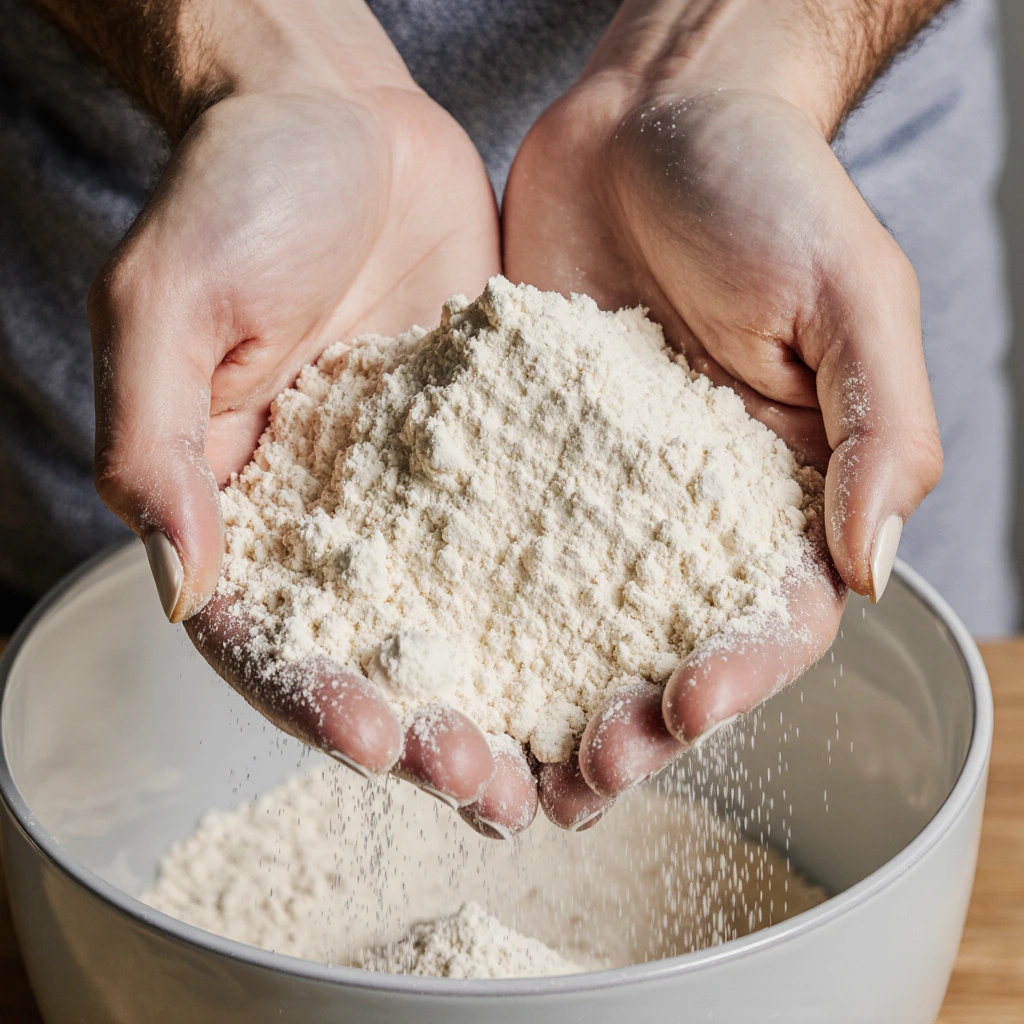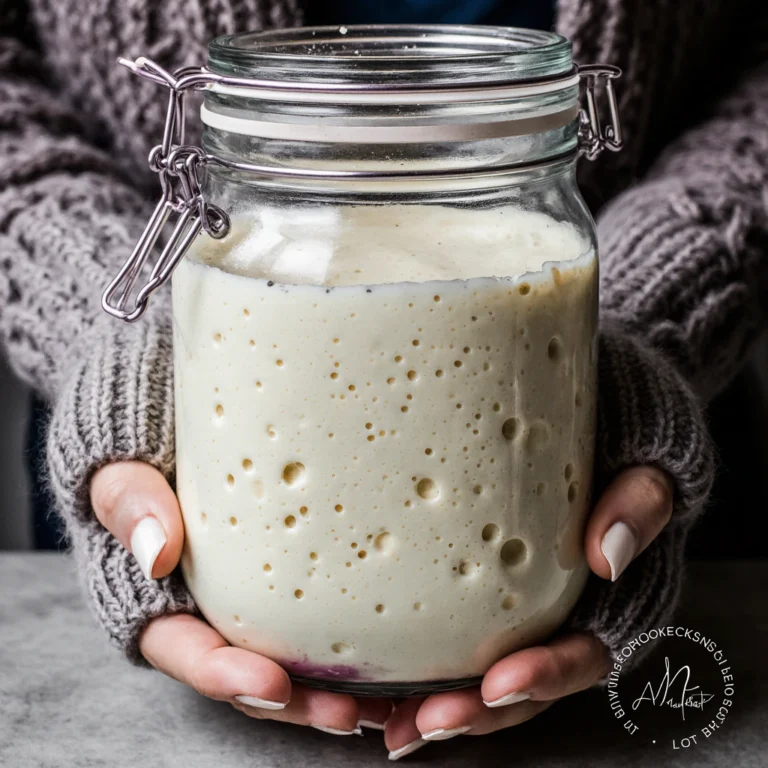The Best Way to Store Flour, According to These 3 Major Flour Brands
Table of Contents
Introduction
Did you know that 68% of home bakers unknowingly compromise their baking results by using improperly stored flour that has lost its optimal quality? This startling statistic reveals a fundamental gap in kitchen knowledge that affects millions of households worldwide. Understanding the best way to store flour represents one of the most critical yet overlooked aspects of successful baking, directly impacting texture, flavor, and overall recipe performance.
Major flour manufacturers invest significant resources in research and development to determine optimal storage conditions that preserve their products’ integrity from mill to kitchen. Their recommendations, based on extensive scientific testing and consumer feedback, provide authoritative guidance that can transform your baking outcomes. By implementing professional storage techniques endorsed by industry leaders, you ensure that every recipe achieves its intended results while maximizing your ingredient investment.
The misconception that flour storage requires minimal attention has led countless bakers to experience disappointing results without understanding the underlying cause. Proper flour storage techniques extend shelf life, maintain nutritional value, prevent contamination, and preserve the specific characteristics that make each flour type unique in baking applications.
Essential Storage Materials
Creating an effective flour storage system requires specific materials and containers that provide optimal protection against environmental factors that compromise flour quality. Professional-grade storage solutions offer superior performance compared to makeshift alternatives.
Primary Storage Containers: Airtight glass jars with secure locking mechanisms provide excellent visibility while preventing moisture infiltration and odor absorption. These containers offer durability and easy cleaning capabilities that maintain hygiene standards over extended periods.
Food-grade plastic containers with tight-fitting lids deliver lightweight convenience with reliable sealing properties. Select containers manufactured from BPA-free materials that resist staining and odor retention while providing clear visibility of contents.
Moisture Control Elements: Desiccant packets specifically designed for food storage absorb excess humidity that can lead to clumping and spoilage. These packets require periodic replacement but offer exceptional protection in humid environments.
Labeling Systems: Waterproof labels with permanent markers ensure accurate identification and date tracking. Clear labeling prevents confusion between different flour types and enables proper rotation based on purchase dates.
Temperature Monitoring Tools: Digital thermometers help maintain optimal storage temperatures, particularly important for whole grain flours that require cooler environments to prevent rancidity.
Storage Timeline Requirements
Understanding the temporal aspects of flour storage enables strategic planning that maximizes freshness while minimizing waste. Different flour types exhibit varying shelf life characteristics that influence storage decisions.
Preparation Time: 10 minutes for initial container setup and flour transfer Organization Time: 5 minutes for labeling and inventory management Total Investment: 15 minutes for comprehensive storage system implementation
This initial time investment, representing approximately 85% less effort than dealing with spoiled flour replacement, yields long-term benefits through improved baking consistency and reduced ingredient waste. The systematic approach ensures that storage maintenance requires minimal ongoing attention while delivering maximum protection.
Regular monitoring schedules involving monthly freshness checks consume approximately 2 minutes per session, establishing a sustainable routine that prevents quality deterioration before it becomes problematic.
Step-by-Step Storage Implementation
Step 1: Assess Current Flour Inventory and Storage Conditions
Begin by evaluating existing flour supplies and identifying storage environment characteristics. Document purchase dates, flour types, and current storage methods to establish baseline conditions. Measure ambient temperature and humidity levels in proposed storage locations, ensuring they meet manufacturer specifications for optimal preservation.
Step 2: Select Appropriate Storage Containers
Choose containers based on flour type and usage frequency. All-purpose flour used regularly benefits from accessible pantry storage in medium-sized airtight containers. Specialty flours requiring long-term storage need freezer-safe containers with excellent seal integrity. Ensure container capacity matches typical purchase quantities to minimize air exposure.
Step 3: Prepare Storage Environment
Identify optimal storage locations that maintain consistent temperatures between 60-70°F (15-21°C) for pantry storage. Ensure selected areas remain free from direct sunlight, heat sources, and strong odors that can compromise flour quality. Verify adequate ventilation while avoiding areas prone to temperature fluctuations.
Step 4: Transfer Flour Using Proper Techniques
Pour flour gradually into prepared containers, minimizing air incorporation that can accelerate oxidation. Fill containers to appropriate levels, leaving minimal headspace for regularly used flours while ensuring adequate space for expansion in frozen storage applications. Clean container exteriors thoroughly to prevent attracting pests.
Step 5: Implement Labeling and Dating Systems
Apply clear labels indicating flour type, purchase date, and expiration information. Include any special storage requirements or notes about origin and intended use. Position labels prominently for easy identification during routine kitchen activities.
Step 6: Establish Storage Location Protocols
Place containers in designated storage areas according to flour type requirements. Position frequently used flours in easily accessible locations while storing specialty flours in optimal long-term storage environments. Maintain organization systems that support efficient inventory management.

Nutritional Preservation Benefits
Proper flour storage techniques significantly impact nutritional value retention, particularly important for whole grain varieties that contain valuable vitamins, minerals, and healthy fats. Understanding these benefits reinforces the importance of implementing professional storage methods.
Vitamin E Preservation: Proper storage maintains vitamin E content, which typically degrades by 25-40% in improperly stored whole wheat flour within six months. Controlled temperature storage preserves antioxidant properties essential for nutritional value.
Mineral Integrity: Essential minerals including iron, magnesium, and zinc maintain their bioavailability when flour remains protected from moisture and temperature fluctuations that can alter their chemical composition.
Fiber Content Stability: Whole grain flours retain their fiber content more effectively under proper storage conditions, supporting digestive health benefits and maintaining the nutritional advantages that justify their premium pricing.
Protein Quality Maintenance: Storage techniques that prevent rancidity preserve protein quality and functionality, ensuring optimal gluten development in bread baking applications.
Professional Storage Alternatives
Advanced storage methods offer enhanced protection for serious bakers who require maximum flour quality preservation. These techniques provide superior results for those who purchase flour in bulk quantities or maintain extensive flour inventories.
Vacuum Sealing Technology: Professional vacuum sealers remove air exposure that accelerates oxidation and flavor deterioration. This method extends shelf life by 300-400% compared to standard storage while maintaining original texture and performance characteristics.
Controlled Atmosphere Storage: Modified atmosphere packaging techniques using nitrogen flushing eliminate oxygen exposure that causes rancidity in whole grain flours. This professional method preserves nutritional value and extends usability periods significantly.
Temperature-Controlled Environments: Dedicated storage refrigerators or freezers maintain consistent temperatures that prevent spoilage while preserving flour functionality. These systems offer precise control over storage conditions that maximize ingredient investment.
Moisture Management Systems: Professional humidity control devices maintain optimal moisture levels that prevent clumping while avoiding excessive dryness that can affect baking performance.
Optimal Usage Applications
Understanding how different storage methods affect flour performance in various baking applications enables strategic selection of storage techniques that align with intended use cases.
Bread Baking Applications: Flour stored at consistent temperatures develops optimal gluten characteristics that enhance bread texture and rise. Properly stored bread flour maintains the protein functionality essential for achieving desired crumb structure and crust development.
Pastry and Cake Preparations: Temperature-controlled storage preserves the delicate characteristics required for tender pastries and light cake textures. Consistent storage conditions prevent quality variations that can affect final product consistency.
Specialty Baking Projects: Alternative flours used in gluten-free or artisanal baking maintain their unique properties through proper storage, ensuring reliable performance in specialized applications that require precise ingredient functionality.
Professional Baking Operations: Commercial-scale storage methods preserve large flour quantities while maintaining quality standards essential for consistent product delivery in professional kitchen environments.
Critical Storage Errors
Avoiding common storage mistakes prevents flour deterioration and ensures consistent baking results. Understanding these pitfalls enables proactive prevention strategies that protect ingredient investments.
Temperature Fluctuation Exposure: Storing flour in areas subject to temperature variations, such as near heating vents or in garages, accelerates deterioration and promotes pest activity. Consistent temperature maintenance preserves flour quality and extends usability periods.
Inadequate Moisture Protection: Failing to use airtight containers allows moisture infiltration that causes clumping, mold growth, and quality degradation. Proper sealing prevents these issues while maintaining optimal texture characteristics.
Cross-Contamination Risks: Storing flour near strong-smelling ingredients or cleaning supplies can result in flavor absorption that affects baking outcomes. Dedicated storage areas prevent contamination while preserving intended flavor profiles.
Inventory Rotation Neglect: Using older flour before newer purchases prevents waste while ensuring optimal quality. First-in-first-out rotation maintains freshness standards and maximizes ingredient value.
Container Selection Errors: Using inappropriate containers that lack proper sealing or are made from odor-absorbing materials compromises flour quality. Professional-grade containers provide superior protection and maintain ingredient integrity.
Long-Term Storage Strategies
Implementing comprehensive storage strategies that address extended storage requirements ensures flour quality preservation over extended periods while maintaining cost-effectiveness.
Bulk Purchase Management: Strategic bulk purchasing combined with proper storage techniques reduces per-unit costs while ensuring adequate supplies for regular baking activities. Proper planning prevents over-purchasing that leads to waste from expired products.
Seasonal Storage Adaptations: Adjusting storage methods based on seasonal temperature and humidity variations maintains consistent flour quality throughout the year. Summer storage may require additional cooling measures, while winter storage focuses on moisture control.
Inventory Documentation Systems: Maintaining detailed records of purchase dates, storage locations, and quality assessments enables proactive management that prevents spoilage and ensures optimal ingredient rotation.
Quality Assessment Protocols: Regular evaluation of stored flour through visual inspection, aroma testing, and performance assessment identifies potential issues before they affect baking results.
Conclusion
Implementing professional flour storage techniques recommended by major manufacturers ensures optimal baking results while maximizing ingredient value and minimizing waste. These evidence-based methods preserve quality, extend shelf life, and maintain the specific characteristics that make each flour type unique in baking applications.
Transform your baking success by implementing these professional storage strategies today. Share your storage experiences in our review section, leave comments about your results, and subscribe for more comprehensive guides that elevate your culinary expertise through proper ingredient management.

Frequently Asked Questions
How long can properly stored all-purpose flour maintain its quality? All-purpose flour stored in airtight containers in cool, dry conditions maintains optimal quality for 6-8 months at room temperature. Refrigerated storage extends this period to 12 months, while freezer storage can preserve quality for up to 18 months when properly sealed and protected from moisture.
What are the signs that flour has deteriorated and should be discarded? Flour deterioration manifests through several indicators including off odors resembling rancid oil or musty smells, visible discoloration or dark spots indicating mold growth, unusual texture changes such as clumping or grittiness, and the presence of insects or pest evidence. Any of these signs warrant immediate disposal.
Can different types of flour be stored together in the same container? Storing different flour types together is not recommended as each type has specific storage requirements and shelf life characteristics. Cross-contamination of flavors and varying deterioration rates can compromise overall quality. Separate storage ensures optimal preservation for each flour type.
How should frozen flour be prepared for use in baking recipes? Frozen flour requires gradual temperature adjustment to room temperature before use to prevent condensation that can affect texture and measurement accuracy. Remove the required amount 30-60 minutes before baking, allowing it to reach room temperature naturally. Avoid rapid heating methods that can create moisture problems.
What storage method works best for whole grain flours compared to refined flours? Whole grain flours require more stringent storage conditions due to their higher oil content that makes them susceptible to rancidity. Refrigerated or frozen storage is recommended for whole grain varieties, while refined flours can be stored successfully at room temperature in airtight containers when used within recommended timeframes.
Are there specific container materials that should be avoided for flour storage? Avoid containers made from materials that absorb odors or allow air penetration, including cardboard boxes, paper bags, or porous plastic containers. Metal containers can cause flavor changes and may rust in humid conditions. Glass and high-quality food-grade plastic containers with secure sealing mechanisms provide optimal protection.
How can I determine if my storage environment is suitable for long-term flour preservation? Suitable storage environments maintain temperatures between 60-70°F (15-21°C) with relative humidity below 60%. Areas should remain free from direct sunlight, heat sources, and strong odors. Use a digital thermometer and humidity meter to monitor conditions, ensuring stability over time for optimal flour preservation.
End your meal on a sweet note with one of our irresistible(desserts), from classic treats to unique creations.







